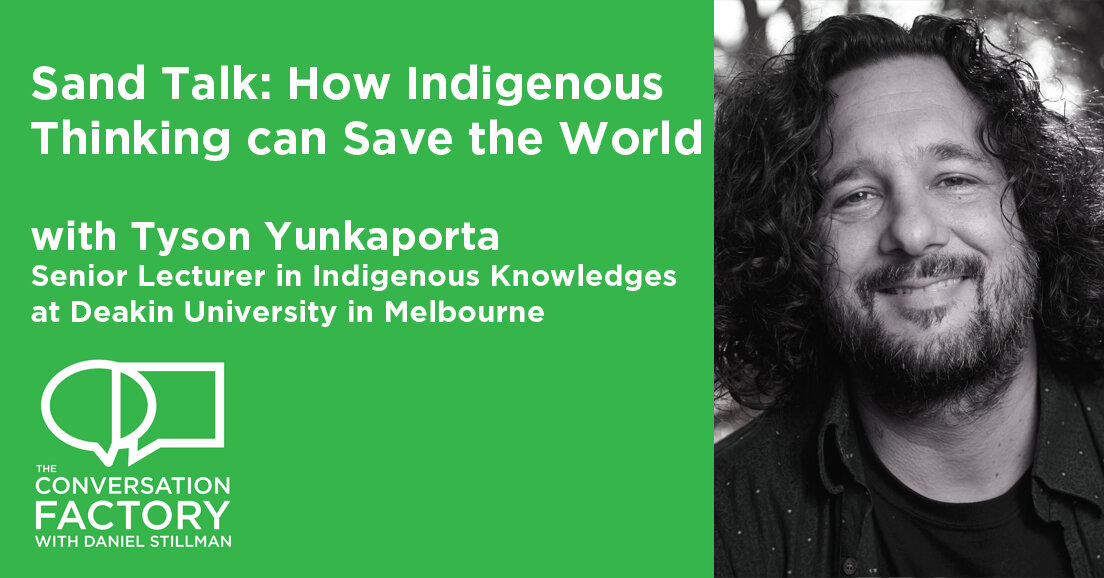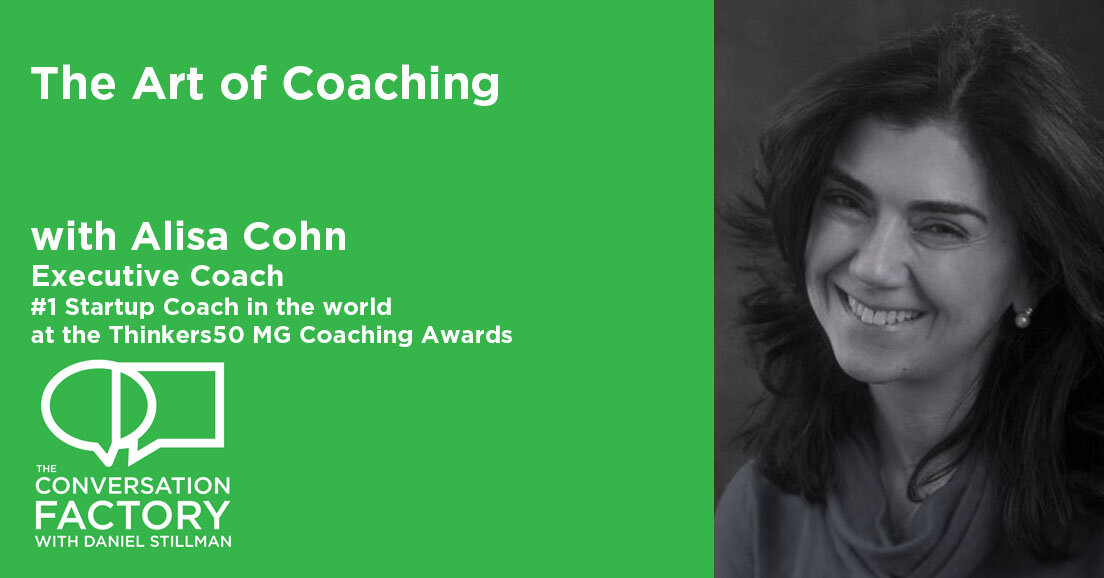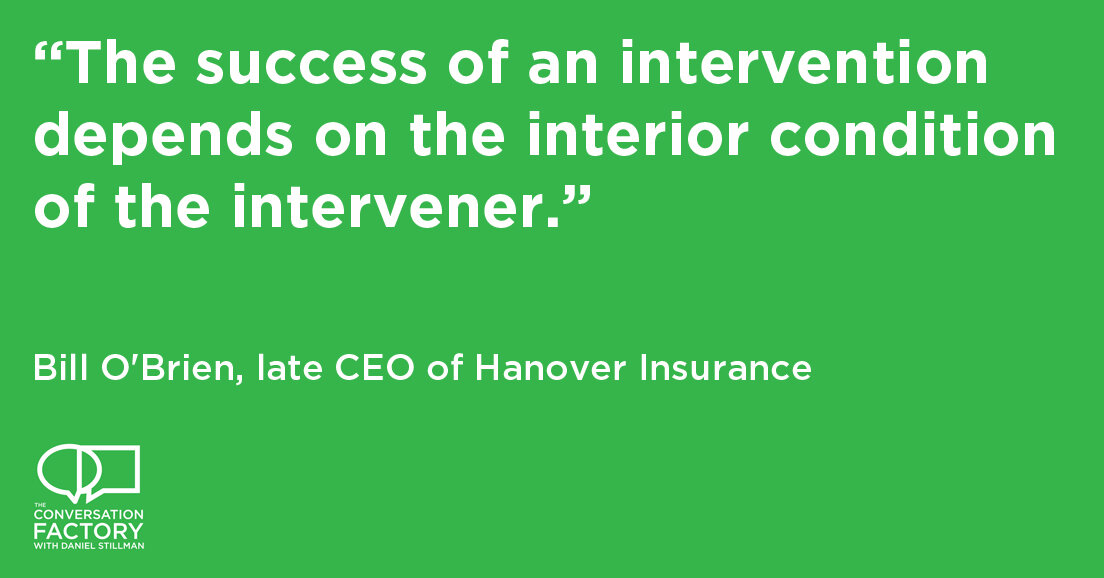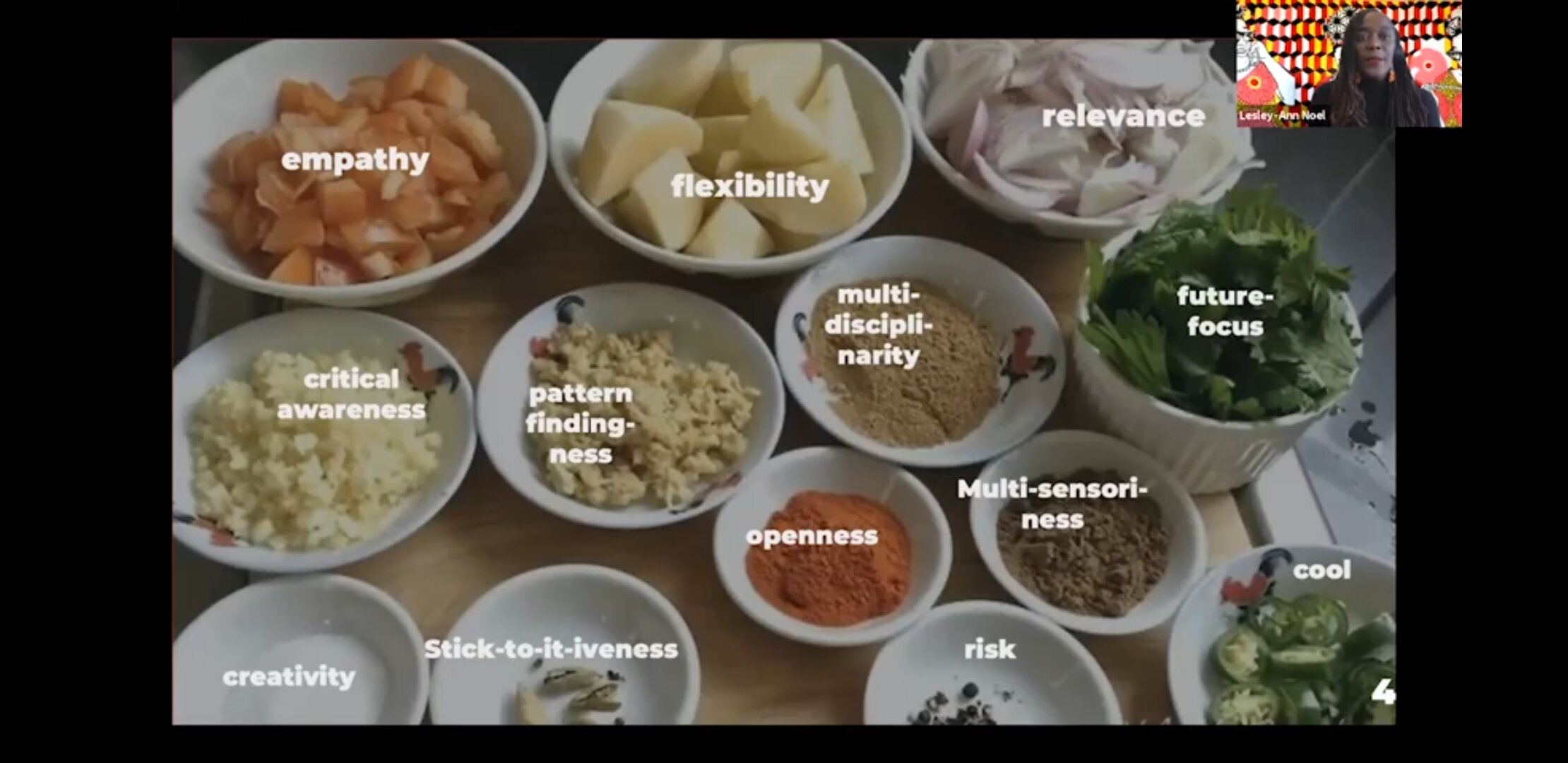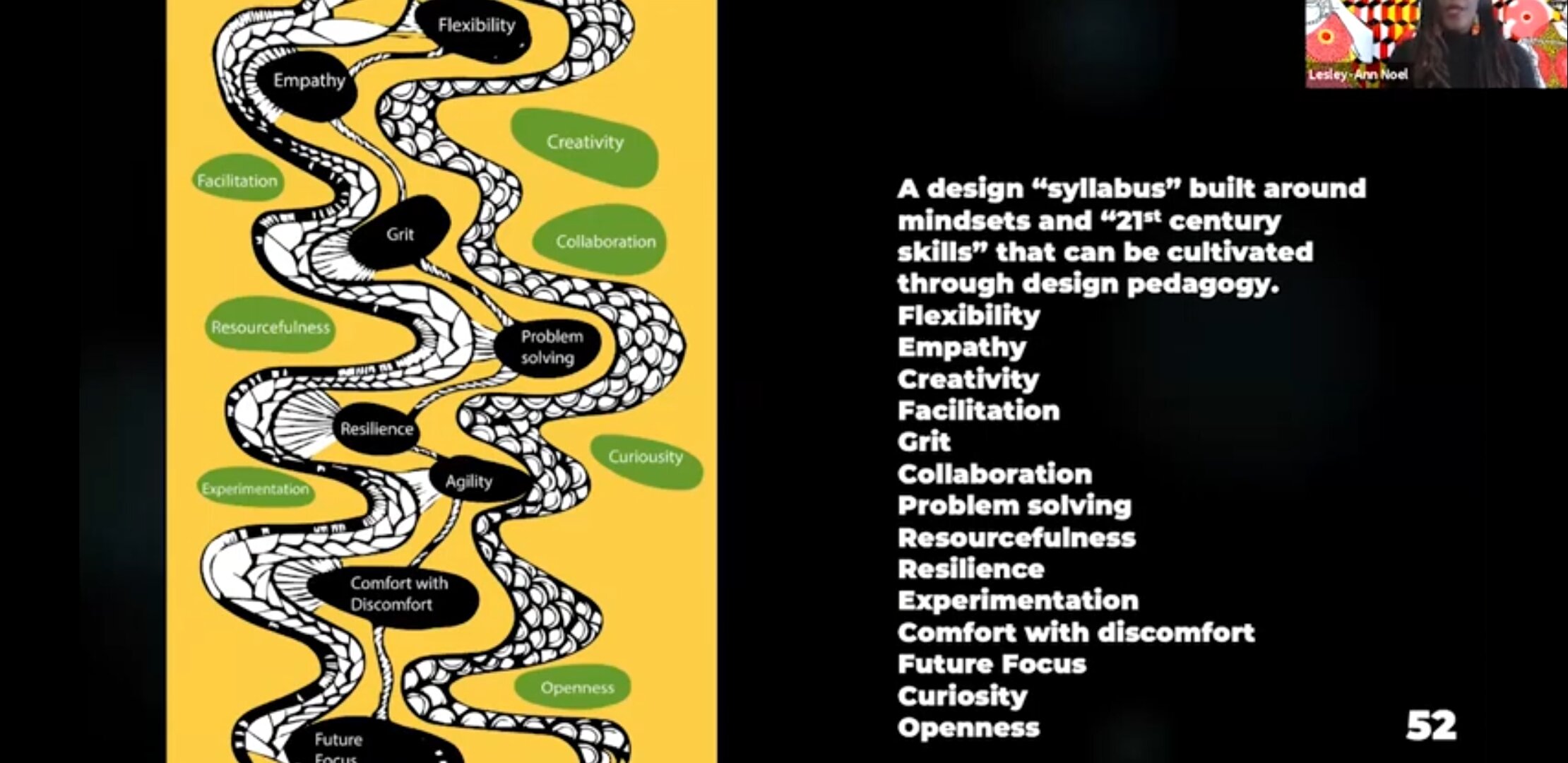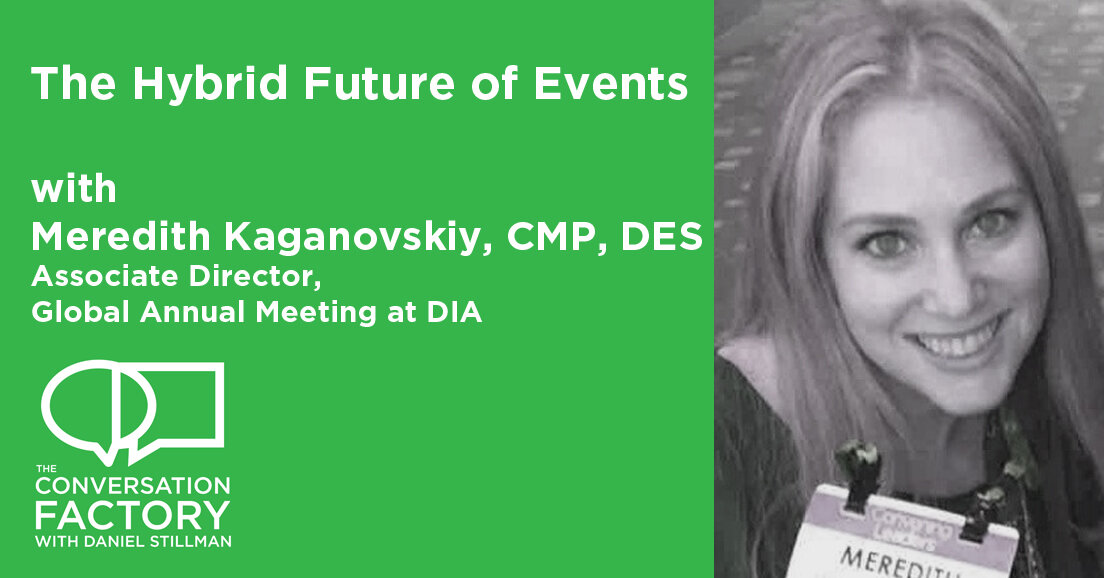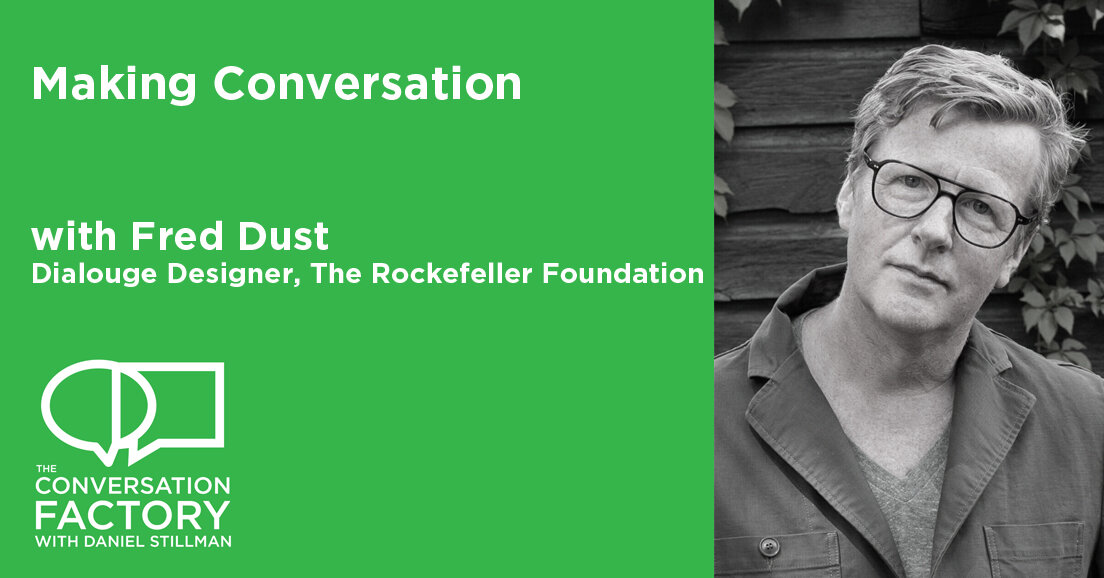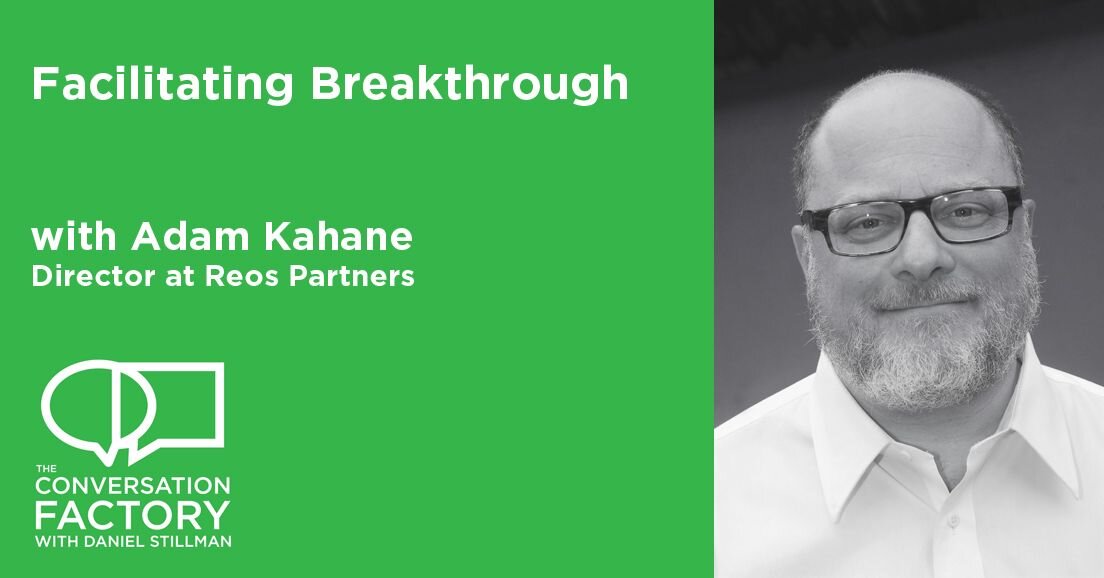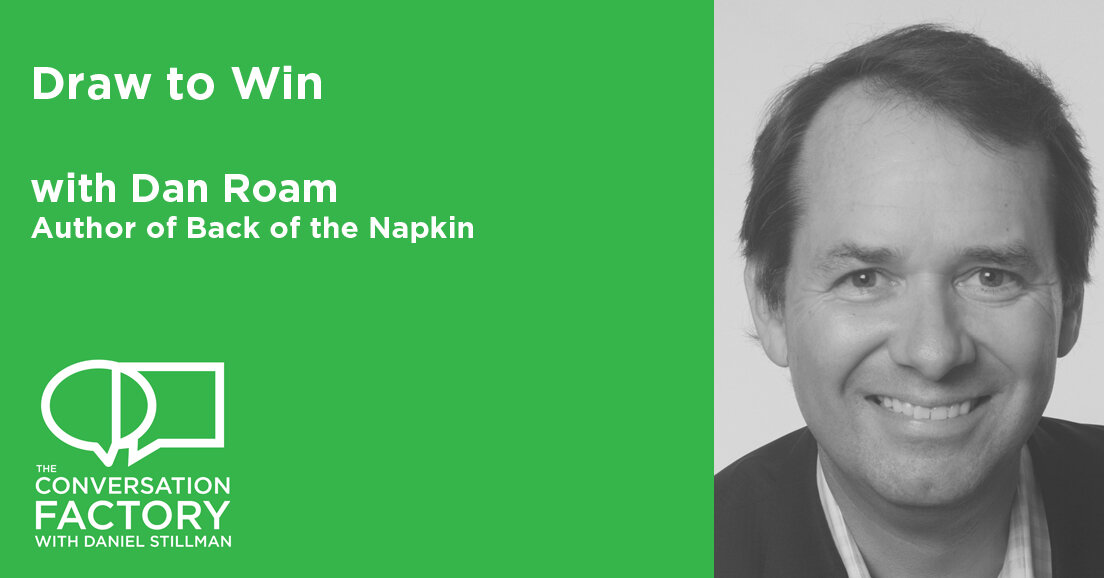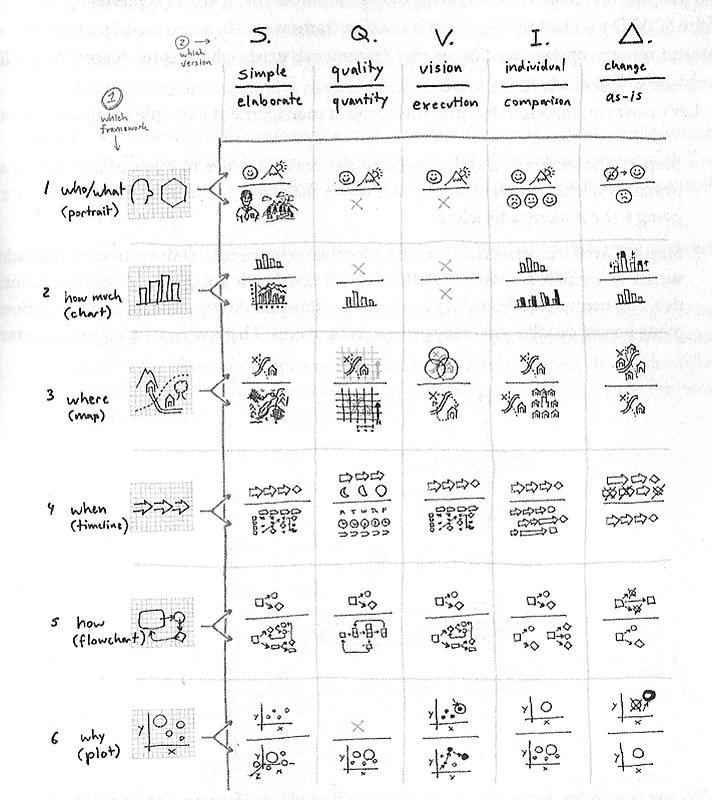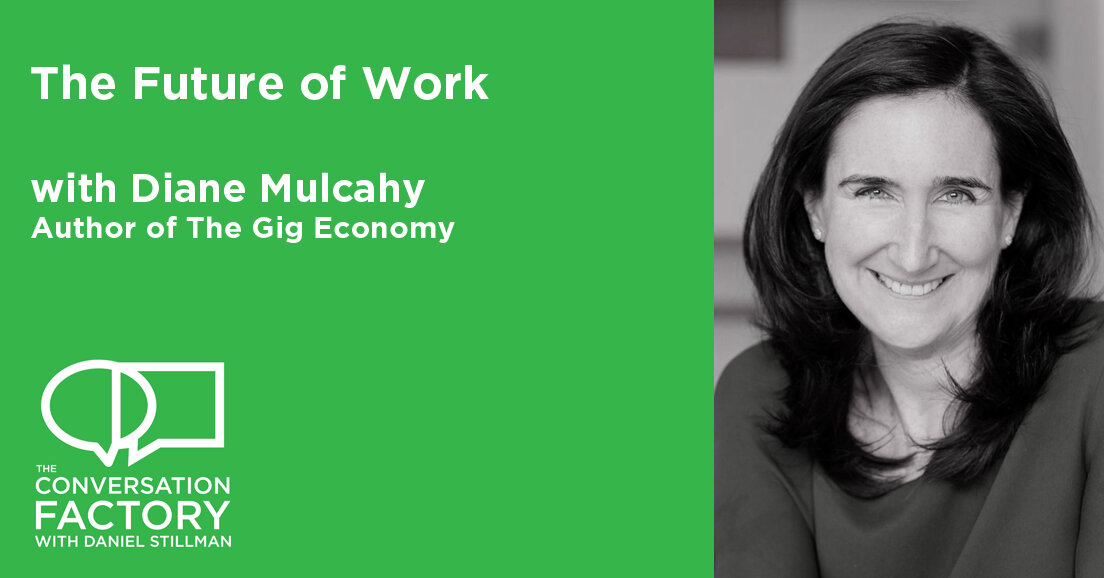Imagine a world in which all leaders feel and display a deep regard for others’ dignity. This is the world that Marilyn Gist, author of The Extraordinary Power of Leader Humility, is working hard to bring about. Marilyn is a Professor Emerita, Executive Programs and Center of Leadership Formation at Seattle University and also a member of the MG100 coaches...a group of the top 100 leaders in the world, convened by legendary executive coach Marshall Goldsmith. Check out my interviews with other MG100 rockstars like Ayse Birsel, author of Design the Life you love, Dorie Clark, author of *several* books, including the upcoming “Long Game” and most recently, Alisa Cohn, the top startup coach in the world, and the author of the upcoming “From Startup to Grownup”
Marilyn is working to redesign the conversation around leadership. Many folks, when they close their eyes and think “leader” , picture a light-skinned man in a dark suit, exuding alpha energy. Just do a google image search to check in with this out-moded vision of leadership.
Leaders lead. They take charge and show the way.
But leaders also need to listen, learn and understand the people they’re meant to be leading.
Marilyn has been teaching and coaching about leadership for decades and she wrote this book so that the world would stop overlooking what she calls “the one variable at the heart of leadership”
Marilyn and I dig into what Leader Humility is, what it means to have it, practice it, and live it, and practical ways to incorporate it into your work and life.
What’s at stake? In human terms, Marilyn points out the Gallup poll that suggests that only 36% of Employees Are Engaged in the Workplace. While that’s actually the highest it’s been in 20 years, since they started measuring it, it’s still really low. Gallup claims that about 14% percent of folks are actively disengaged (rather than just the 51% that is just regular-old disengaged).
On your next zoom call, look around...it might be possible that only a third of the people on the grid really care. Again, in human terms, that 60-ish percent of folks is a drag on the small percentage of folks who really care.
In financial terms, some estimate $500 billion in total losses in the US. In any one business, estimate 34% of the total salary roll. Yikes.
If you ask the average worker in the US if their leader cares about their culture
31% of leaders don’t think they have the culture they need to succeed. Their workers don’t even think they care! 9%of workers say the leadership in their organizations are very committed to culture initiatives, and 58% of respondents say that their leadership either takes no action regarding culture or are merely reactive instead of being proactive.
Marilyn suggests that workers want answers to three key questions from a leader:
Who are you? (Not your name - who are you really as a person? What do you stand for?)
Where are we going? (What is the bigger vision?)
And do you see me? (Am I just a cog in the wheel or do you see me at all?)
Also listen for a few of Marilyn’s Six Keys to Leadership Humility:
A balanced ego,
Integrity
A compelling vision
Ethical strategies
Generous inclusion
A developmental focus.
Listen on to the halfway point of our conversation to hear Marilyn tell a powerful story of generous inclusion and the generous question that Satya Nadella, CEO of Microsoft used to turn the lone dissenter on a team into a supporter of an initiative. While it would be easy and, as Marilyn points out, defensible, to go with the majority sentiment, using the skills of leadership humility can be more powerful and durable than conventional leadership.
LINKS, QUOTES, NOTES AND RESOURCES
Marilyn's Website (you can find links to her book there!)
Marilyn on Twitter
Reinvention is Building a Conversation with Dorie Clark
Designing the Life You Love with Ayse Birsel
The Art of Coaching with Alisa Cohn
Minute 5
So I'm defining humility, leader humility very specifically, it's not meekness, it's not weakness. So it can seem counterintuitive because a lot of times people associate humility with meekness. I'm talking about a different aspect of it, which is feeling and displaying deep regard for others' dignity, really showing up, showing respect for other people's dignity. And that's what sets people on fire because most leaders don't do that, unfortunately.
Minute 8
People have hearts. They're whole human beings, they come to the work and every single one is different. And this idea of dignity is really that individual sense of self-worth, what is it that goes into their sense that I'm valuable as a human being? And every human being has and needs a sense of self worth. So if we can honor that, if we can support that in our leadership, then we've got people's attention. If we step all over it, they start to withdraw or resist.
Minute 16
Hypothetically as a woman, I may be more sensitive to looking at an organization that has very few women above me in leadership. Men might not be as sensitive about that. But that can touch on my sense of self-worth in a way that it might not touch on yours or a man's. That doesn't mean I'm political about it or that you can dismiss that as identity politics, it's identity, it's a sense of self-worth. So I think understanding that is the first thing and having the humility to feel and display regard for others' dignity is how we get around it.
Minute 17
When we look at a leader, if I'm getting a new boss or we have a new national leader or a new CEO comes into the organization, immediately we start to think about three things, who are you? Not your name, but who are you really as a person? Where are we going? And do you see me? Am I just a cog in the wheel or do you see me at all?
And the leader's behaviors and the spoken words in a fairly short period of time are going to signal people about who they are, the direction they're setting and how you're being treated. And so there is a set of behaviors that tend to offer positive signals and support others' dignity, and I call them the six keys to leader humility, and I do discuss them in the book.
Minute 27
You ever hear a backlash about nobody asked me about it or why didn't you come and talk to us in advance? We would have told you about this potential impact that's now very serious. So I think that's an example of the kind of thing that happens quite often where leaders in thinking about other people's dignity would realize that I have relationships with all of these different stakeholder groups, and while they might not always be in sync or agree, they all have a sense of dignity that I need to honor, and at the very least, I need to pick up the phone figuratively and have a conversation about it.
Minute 40
And I like your phrase, owning our own dignity because I think we all do it whether we're intentional about it or not and the extent to which we compromise that. I mean, if we compromise our sense of dignity in key ways, it's not good and we end up not feeling good. And I talk about this with leader humility, but it applies to all relationships. Think about being in a partnership or marriage or whatever. If you're with someone and you're compromising your own sense of dignity all the time, that's not going to last well or long, friendships, family relationships.
More About Marilyn
As author of The Extraordinary Power of Leader Humility, Marilyn Gist guides leaders in creating thriving organizations and great results. Imagine a world in which all leaders feel and display a deep regard for others’ dignity. This is what humility means and it helps leaders resolve conflict, increase engagement, and optimize performance. Marilyn has extensively studied why leader humility is the essential foundation of all healthy organizations and validated her work with interviews of prominent CEOs of companies ranging from the Mayo Clinic and Ford to Starbucks and Costco. She adds value through ground-breaking insight: the six keys required for leaders to work together well with all stakeholders. According to Marshall Goldsmith, “Marilyn Gist’s The Extraordinary Power of Leader Humility, is a must-read for every leader.” This bestselling book has been featured in Forbes and Quartz, and Marilyn’s ideas on leader humility have appeared in The Hill, CEOWorld, Sirius SM Wharton Radio, and numerous podcasts. Ken Blanchard who authored The One-Minute Manager says, “This inspiring book belongs on the desk of every CEO and politician in America.”
Based on this work, Marilyn consults widely and is a keynote speaker on topics emphasizing NextGen Leadership, Rising out of Crisis, and Get Off the Sidelines and Into the Game (the latter being geared toward female leaders). A recognized expert, Marilyn brings direct leadership experience along with academic credentials. As former Associate Dean, Professor of Management, and Executive Director of the Center for Leadership Formation, she led the design and development of Seattle University’s Leadership EMBA degree program from its inception in 2006 to rank as high as #11 in the nation by US News and World Report. She began her academic career at the University of North Carolina at Chapel Hill. She later joined the University of Washington where she held the Boeing Endowed Professorship of Business Management and served as Faculty Director of Executive MBA programs for many years. Her research has been highly cited by others, demonstrating exceptional thought leadership.
Marilyn earned her BA from Howard University and her MBA and PhD from the Smith School of Business at the University of Maryland, College Park. She is a member of the Academy of Management, American Psychological Association, Marshall Goldsmith 100, and the International Women’s Forum.
Full Transcript
Daniel Stillman:
Marilyn Gist, I am going to welcome you to the Conversation Factory. I am super excited that you made the time to talk about this really important virtue, humility.
Marilyn Gist:
Yes, thank you for inviting me. It's a delight to be here, Daniel.
Daniel Stillman:
You're very kind. So okay, let's actually start close in, let's start where we just were because if we're going to change the conversation about leadership, the intention of your book, The Extraordinary Power of Leader Humility, which I thought was a lovely book, the idea is to put humility at the center and it's not right now. How do we-
Marilyn Gist:
Correct.
Daniel Stillman:
How are you... it seems like it's your mission to move humility into the center of the conversation.
Marilyn Gist:
Right.
Daniel Stillman:
Can you just take us on the journey of how you discovered and came to really value humility?
Marilyn Gist:
So some of it was my own personal trial and error. As a leader when I was younger, I don't think I got it, in fact, I know I didn't. And I watched my intent to motivate people through more of a command control directive approach that stepped on some dignity seemed to go in the wrong direction. So I'm a pretty reflective person. I didn't have an answer, but I watched that and I kind of winced at some of the reactions that I saw.
Marilyn Gist:
And then over the years of working with executives particularly because I've been involved in executive MBA programs for over 25 years in different universities, and I've met some wonderful people and I've heard lots of unsolicited comments about the organizations they work for, the people they work for, some of those were consistently good. I'd hear some of the same things over and over again, for example, about Jim Sinegal at Costco, CEO, co-founder of the company.
Marilyn Gist:
And I won't mention names that were less receiving praise, but I'd hear the same things. And after a while, I really became curious as to why is it that people like Sinegal are always not only praised by people who work for them, but the people are so passionate about the organization they're willing to do just about anything to make it succeed, they put in enormous amounts of effort and time. And the more I looked into this and also looked in some academic research, I realized there's a component of humility that we are not talking about. And Daniel, this goes back a good 20 years to some of Jim Collins work with the book Good to Great.
Daniel Stillman:
Sure.
Marilyn Gist:
I mean, he, in my view is the, as far as I know, the first person who identified that what separates companies that become great from those that remain merely good is leadership and that the leaders in particular have two qualities. One is a strong drive for success, and that's pretty standard that we select leaders for that. We want driven people, we want goal-oriented people.
Marilyn Gist:
So they certainly had that. But the thing they had that the merely good companies didn't have was a deep, personal humility, which is also what Sinegal has. And so I just really became fascinated and started looking at it more and then as you'll know from the book, began interviewing people who were known for their humility as well as people who worked with them. And I just began to see that's what sets people on fire. So, yeah it's magic.
Daniel Stillman:
So it's such an interesting phrase because the idea that humility sets people on fire, it's not a given.
Marilyn Gist:
No.
Daniel Stillman:
I don't think many people would expect that that's the case. But in this sense, and this is my understanding, is it's respect for others worth and dignity that is a game changer in getting the best out of other people.
Marilyn Gist:
So I'm defining humility, leader humility very specifically, it's not meekness, it's not weakness. So it can seem counterintuitive because a lot of times people associate humility with meekness. I'm talking about a different aspect of it, which is feeling and displaying deep regard for others' dignity, really showing up, showing respect for other people's dignity. And that's what sets people on fire because most leaders don't do that, unfortunately.
Marilyn Gist:
But I'll go back to this idea that we think of leaders as people who are going to drive results and get a lot done. And that's certainly what we're hoping they'll do, that maybe they'll have a vision, they'll set strategy, they'll drive results. All of those things are important but what we miss is that leadership is a relationship. Leaders are not individual contributors just working like crazy, they're doing a lot more work through an organization or with other people.
Marilyn Gist:
And the quality of that relationship with each of their different constituents determines how much people cooperate, how much they give of themselves, whether they phone it in, go through the motions, do the minimum they have to do, or whether they give it everything they possibly can, whether they have your back, whether they're full partner with you in trying to achieve your goals. And the thing that really makes a difference is showing respect for their dignity. When you do that, you've got their attention.
Daniel Stillman:
So you've been involved in a lot of leadership development work, and it sounds like you believe that humility is not at the center right now, it's about results and there's the technical aspects of driving results. How do we start to put humility at the center of the conversation about leadership as we develop leaders in our organizations?
Marilyn Gist:
I think we have to first raise awareness because I don't think people see what they're missing. They don't understand the huge opportunity cost that we are paying because we are not selecting and developing leaders who do this. And that's part of what I'm attempting to do with the book and by interviewing the dozen leaders I selected who were all pretty much from big brand companies so that you can show this isn't a backwater concept that only works for some three person organization over here in a corner that no one knows about, this is working for mega organizations that are producing just great results.
Marilyn Gist:
So I think getting the awareness up that yes, there is a differentiator, yes, it does drive results is the first step. I would hesitate to say it's not being used. I think that there are a number of leaders who are outstanding in their own sense of personal humility and the way they have fired up their own organization and I could run down a list even beyond those that I interviewed. But I would say it's not mainstream. I think in that, it's, yes, it's not the heart of the conversation, but I go back to we're not yet realizing how important the relationship piece is with leaders.
Marilyn Gist:
And I think we've come at relationship more from a compliance standpoint. We're teaching leaders what not to do, how it is that you avoid sexual harassment, how you give performance feedback that is specific to the task and the job at hand and doesn't sort of fall over into some other things. So I think those more compliance oriented approaches have some merit. I'm not saying we can't focus on compliance or that we can just ignore it, but I don't think it gets to the heart of humans. And I wrote the word heart judiciously.
Marilyn Gist:
People have hearts. They're whole human beings, they come to the work and every single one is different. And this idea of dignity is really that individual sense of self worth, what is it that goes into their sense that I'm valuable as a human being? And every human being has and needs a sense of self worth. So if we can honor that, if we can support that in our leadership, then we've got people's attention. If we step all over it, they start to withdraw or resist.
Daniel Stillman:
It really is... so I want to just meditate on this for a second with you, Marilyn, because I think it's so interesting. And my group facilitation work, when I coach groups to transform, I have a personal value that everyone's voice is worthy of being heard and can and should matter. And so I, because of that belief, I create a space for everyone to be heard as much as I can, that's part of my values.
Daniel Stillman:
If they're in the room, they are a person, they have a heart, they have opinions and they have a voice and they can use it. And I think creating that space for other people to express themselves, I agree 100% can be transformative. I guess the thing that I'm struggling with is the people, and I don't know if I'm expressing this correctly and I'll try to work my way and hopefully you'll guide me to the... I don't say that humility is... it's not at the center of people's consideration.
Daniel Stillman:
We're having meetings and we have to go fast, we have to make decisions. And if somebody gets knocked around, so be it, it's about results. Sometimes it seems like humility and making time for humanness takes time and we don't have time to do that. And so I'm wondering how we might encourage people to make the time and space to invest in that time to celebrate and appreciate the dignity and self-worth of other people, because it does take a time investment. You can't just... it's not a box tick, it's not an email that I can send.
Marilyn Gist:
Right, right. So imagine you have a runner and you have two different tracks and they are both running at the same speed. One track is longer than another and so you're on that track and you think that it is going to take you longer to get there. And that is the way we tend to view investing in the human side of things, is like it's long. What we're missing though is the evidence, it says only 34, 35% of employees globally and in the United States, it's about the same, there's some variability across countries, but globally, only 34% of employees are fully engaged in their work, just 34%.
Marilyn Gist:
That 66% who are not, and of that, a chunk of them are actively disengaged, meaning they hate what they're doing, they hate where they're working or who they're working for, they're actively looking for another position. And even more of them are disengaged, but not necessarily actively looking. Maybe they need the job, maybe it's the only job around, they show up, they do what they have to do and that's it. There's a huge opportunity cost.
Marilyn Gist:
Think of how much we're losing on a result standpoint by having what I think of as shell partners, a sea shell, you pick it up, it's empty. There used to be something living and breathing in it, but it's just a shell. Well, a lot of the people who are sitting around the table or sitting in the cubicle or sitting down the hallway are shell employees or shell partners. And it's not only in an employment sets, leaders have many different stakeholder groups. They have suppliers, they have customers, they have senior leadership boards, they have regulators and on and on and on.
Marilyn Gist:
And so they have relationships with each of these different groups, and the question in my mind is how many of those are shells, how many of them are shell workers? They're occupying a certain role, but they're not fully engaged with you. So this idea that it takes time to invest in the humanness and we don't have time is the assumption that that's the longer path, and it really isn't. It doesn't take a ton of time to really respect other's dignity. And in my work, I talk about some very specific ways that we can do that. And not all of them are very time intensive at all, some are.
Daniel Stillman:
Well, let's decompose it a little bit because I think you've done a lot of good thinking on humility for you is not one big thing, it is a set of behaviors. It's a set of questions, it's a set of mindsets.
Marilyn Gist:
Right.
Daniel Stillman:
So if somebody is like, how do I get really good at doing this in my work? What are some of the key ways in which we can start embodying proactively the humility and dignity of the people around us? I know it's like on one level, I'm like, "We shouldn't have to ask this question," but we do. I have a feeling people need these concrete ways of doing it as we develop our young leaders.
Marilyn Gist:
Right. So let me start at a macro level and say this idea of dignity of another person's sense of self-worth runs pretty deep. So we have not only this basic sort of sanctity of life thing that we have going in most cultures, but there is more of a personal sense of dignity when I think of who I am and what I feel is worthy about me as a human being. It could include a set of talents I have, it could include the fact that I'm a woman, it could include where I grew up, it can include my education, my job skill set, my family, my family structure, kids, it can include all sorts of things about me as a unique person.
Marilyn Gist:
And some of the things that go... I mean, we're all different with 7 billion people on the planet, no two are alike as far as we know. And every single one of us will have this package of things about ourselves that contribute to how we feel worthy as a human being. So I think the first step is for leaders to realize that in relating to people, we have to put that idea front and center, that I'm talking to you and you have a name, and I see you as a person on the outside, but there's a really deep, rich inside to you and I can't just steamroll over that in my comments to you in the way I act to you.
Marilyn Gist:
I have to be somewhat sensitive to it. So as an example, we have this sort of cultural discussion about identity politics, to me, which is such a... it misses the point. It misses the point in attempting to even politicize the idea that people have differing identities. Of course, we do. And of course, the responsibility needs to be on those who have the power and the authority to be open to the fact that there are these different identities.
Marilyn Gist:
Hypothetically as a woman, I may be more sensitive to looking at an organization that has very few women above me in leadership. Men might not be as sensitive about that. But that can touch on my sense of self-worth in a way that it might not touch on yours or a man's. That doesn't mean I'm political about it or that you can dismiss that as identity politics, it's identity, it's a sense of self-worth. So I think understanding that is the first thing and having the humility to feel and display regard for others' dignity is how we get around it.
Marilyn Gist:
There's three questions people have, and I talk about these in the book. When we look at a leader, if I'm getting a new boss or we have a new national leader or a new CEO comes into the organization, immediately we start to think about three things, who are you? Not your name, but who are you really as a person? Where are we going? And do you see me? Am I just a cog in the wheel or do you see me at all?
Marilyn Gist:
And the leader's behaviors and the spoken words in a fairly short period of time are going to signal people about who they are, the direction they're setting and how you're being treated. And so there is a set of behaviors that tend to offer positive signals and support others' dignity, and I call them the six keys to leader humility, and I do discuss them in the book. I'd be happy to chat more about it if you'd like.
Daniel Stillman:
Well, you hit on one, which is relating to people as full people.
Marilyn Gist:
Right.
Daniel Stillman:
And you said there were three key ones. And I was like, "Oh, what are the other two?" So we can-
Marilyn Gist:
There're three key questions, so the who are you, where are we going and do you see me? And then the leader's behavior answers those in kind of a mirroring way. So who I am as a person gets conveyed to you, the direction I set and how I treat you. And then within each of those, there's a couple of specifics. So in terms of who I am, what really moves the needle positively or negatively is what I call ego ballots: Am I arrogant, or am I merely confident? Or am I too meek?
Marilyn Gist:
So you want kind of a vital confidence in leaders where they know their strengths and their weaknesses. If they can't admit their weaknesses, then they put the organization at risk. And let's face it, Daniel, everybody else sees our weaknesses. Why can't we admit that we have them? It's no secret. Does its wrong for people to realize, what I'm good at, what I might not be so good at. So the ego balance is really important to really supporting other people's dignity because if I'm super arrogant, then people will know that they can't really let me know when I've made a mistake or they'll find that I'm taking credit for other people's work, that I might be blaming people, I'm very self-centered, I'm boasting.
Marilyn Gist:
So those types of behaviors work against this idea of supporting others' dignity, where someone who's confident, who knows that they're able to lead people but also knows their strengths and weaknesses is much more supportive of others' dignity. Another piece of the who I am that's really important is what I call robust integrity. Does a leader walk the talk, can they be counted on to follow through with what they commit to? Are they fundamentally honest in the way they communicate and fairly transparent?
Marilyn Gist:
So the integrity piece matters a lot to others' dignity. If a leader is dishonest or can't be counted on, it has a negative effect on other people's dignity as well. So with each of those three questions, I walk through a couple of the really powerful behaviors we mentioned including people, so I'll piggyback on that when I get to the part about how you treat people. Generous inclusion is a really important part of it. But you were saying if someone's in the room, they should be able to speak, voice their view.
Marilyn Gist:
But I take it beyond that because I'm thinking of including all of your stakeholders and drawing the boundary broadly enough that all of your stakeholders are included in key decisions you're making or actions that are going to affect them. So it doesn't mean you have a huge town hall and invite thousands of your customers and your suppliers in, but it means when you're making decisions that you think are going to have an impact on this group, particularly if you think they're not going like it, it's going to be negative, figuratively pick up the phone and invite their input and listen.
Marilyn Gist:
Is there a way that you can moderate what you're doing to bring that in? If I can share a little story here, I think it illustrates generous inclusion, and I was doing a workshop recently and I actually heard this story. So it's secondhand, but it was so powerful. And it was a woman who worked at Microsoft and had been involved in a proposal for a policy that had to go before Satya Nadella, the CEO for recommendation and approval. And there was a committee that was working on it and there were 10 people, nine of whom were very strongly in favor of, let's call it option A, and one who was adamantly opposed to option A and very in favor of option B. And they had not been able to reach agreement beyond that nine in favor of one, and one opposed.
Daniel Stillman:
They were apparently agreeing to disagree, as we say.
Marilyn Gist:
They were agreeing to disagree. So when it came time to meet with Satya and to share their recommendations, they explained that this was where they were, nine wanting option A and one voting for option B. Most people would say, "Well, tell me a little more," they'll listen and they'll say, "Well, it looks like we've got a majority. Let's go with option A." That would be very common, and in some ways defensible approach because the majority rules, nine people, that's pretty compelling. He did not do that.
Marilyn Gist:
What he did was to turn to the person who favored option B and say, "What three things would need to be true in order for you to support option A? What three things would need to change and be true in order for you to support option A?" And it was powerful when I heard this because it puts the responsibility on that person to do more than complain or oppose or resist. They've got to come up with suggestions but it also really was generously including that person in the problem solving.
Marilyn Gist:
So the person said, "Well, I think if we did this, it would help." And then he would turn to the majority and say, "What do you think about that?" And they'd go, "Well, I guess we could tweak it this way and we could do some of that." And then he went back to option B person, got the next thing, went through the same process, got the third thing, went through the same process and then said, "Now that those three things are out there, if those three things are true, could you support option A?" And that person said, "Well, yeah."
Marilyn Gist:
And then he turned to the majority group and said, "Can you support it now with these changes?" And they said, "Yeah, actually we can." And you ended up with 10 out of 10. It was just a magnificent example to me of generous inclusion where he didn't do the default taking what the nine wanted, but he listened to that 10th person, and in the process came up with a stronger alternative than what they had started with.
Marilyn Gist:
Now, it's possible that they wouldn't have gotten to agreement at the end of this, which is also okay because then what happens is everybody's been heard and they've been even heard by the person at the top. And then the person who didn't get their way, say the minority opinion, at least has been part of a more rounded discussion. So I think that it was just a really great example of generously including all of your stakeholders and a way of solving an impasse.
Daniel Stillman:
It's a beautiful and profound example, Marilyn. Because when I think about designing conversations, I think that's a wonderful example of in that moment, you could say, "Well, majority rules," and that's, as you say, defensible and reasonable, nine to one. Person one, you are basically saying to them, "Shut up."
Marilyn Gist:
Exactly.
Daniel Stillman:
Right? And-
Marilyn Gist:
You've been overruled.
Daniel Stillman:
You're overruled. And they might respect the fact that majority rules that's, as you say, generally defensible position, it is hard to turn a no into a yes. If that person really needs to support that decision, does nine people saying we want it actually get them to support it?
Marilyn Gist:
Right.
Daniel Stillman:
Does that actually get the best out of them?
Marilyn Gist:
Not necessarily, it doesn't. And particularly if they had some expertise or some real awareness that what they were resisting or suggesting was accurate and important, I mean, how many times do we watch this in organizations where we know better about something but we're not necessarily being heard. So that to me was really the brilliance in his effort to realize that, "Let's see if we could draw out of this person what the essentials are of their opposition to this other approach and find a way to blend the two so that we come up with a win-win." And just really amazing example to me, of generous inclusion.
Marilyn Gist:
You could think of it in terms of, you've got an organizational policy that you're about to implement, maybe it's a change that's going to affect your customers and perhaps your suppliers, but the people who are going to have to do the work are your employee group, maybe some other managers. And so typically, we work those issues on the inside and we come up with our new policy and then we send out the announcement.
Marilyn Gist:
You ever hear a backlash about nobody asked me about it or why didn't you come and talk to us in advance? We would have told you about this potential impact that's now very serious. So I think that's an example of the kind of thing that happens quite often where leaders in thinking about other people's dignity would realize that I have relationships with all of these different stakeholder groups, and while they might not always be in sync or agree, they all have a sense of dignity that I need to honor, and at the very least, I need to pick up the phone figuratively and have a conversation about it.
Marilyn Gist:
And it can be we have a policy issue, we've got some concerns, I'm going to have to make a decision, but I want your input. Can you tell me what your thoughts are? How is this going to affect you? And at least allow people to feel that they have been seriously included in the process. Now you do have to listen. You're not going to get away for long with faking your way through that, and then constantly ignoring the input that you get. So that is the other side of it.
Daniel Stillman:
It seems like a rigorous and thoughtful approach to what I would call stakeholder mapping is absolutely essential. And I think one of the things that people would probably... that I've seen leaders struggle with is where does it end? Because when I looked at your quote on LinkedIn about how putting humility at the center of a leadership conversation can transform the health and progress of civilization. It took me aback for a moment. And when I'm sitting here in this conversation with you, if I'm willing to acknowledge the dignity of people outside of my organization or outside of my community, outside of my nation, it really can be transformative to respect the humanness, the human dignity of all of the people who might be affected by my decisions.
Marilyn Gist:
Right. And that's a big order, but I think it's where we need-
Daniel Stillman:
It is.
Marilyn Gist:
It's where we need to go. We're such an interdependent set of nations and our interests are so intertwined we will never go back to living within national boundaries. I mean, take COVID, the pandemic situation, you can't contain that based on some geographic boundary. Take climate, you can't contain that within some geographic boundary. So we have a number of issues that are really human wide global and I think we have differing approaches to it, different politics around it. But if we could approach the discussion from the standpoint of really supporting and respecting other people's dignity, then we look for a win-win, we'd have a different level of discussion about what we need to do to work together to resolve some of the larger problems.
Daniel Stillman:
Game-changing. So I want to ask you a very-
Marilyn Gist:
Yes.
Daniel Stillman:
I mean, I want you to share your unique expertise as an educator, and as you said, a group coach and trainer of leaders. Now showing people as you do exemplars of excellent leadership in some of the top organizations in the world is one way to inspire people to model themselves in this way. I'm wondering in some of the programs that you run, what are some other ways to concretize this approach? Because I have this idea that an experience is worth a thousand slides. We can show people all the slides in the world we want about how humility is important and it's good, and here are the six questions, but how do you get people to really experience and change their perspective on that to wake up to this truth?
Marilyn Gist:
So there's a couple of... I mean, there's multiple ways of doing it. Certainly as we were saying earlier, there's one-on-one coaching. I think humility can be taught in most cases, I'd say probably for 85% of the leaders, they either already are displaying it to a great extent and might benefit from knowing the one or two areas they could strengthen. Or if they're not good at it at all, they can make major improvement.
Marilyn Gist:
There's probably 10, 15% who are so narcissistic, they're not ever going to get it. But what I believe is that it takes self-awareness as well as a desire to do it. And I influence the desire in my coursework by helping people understand the opportunity cost, by providing the conceptual framework around what is dignity and the fact that it's universal. What's in it for each person is different, but we all have and need this sense of dignity. How do we feel when someone steps all over our dignity?
Daniel Stillman:
You have the cat, you said there was a cat. If you're playing at home and you can't see the video, but you can circle on your Zoom BINGO Card. It's a lovely, is it Persian?
Marilyn Gist:
This is my-
Daniel Stillman:
Long hair Persian?
Marilyn Gist:
He's a Siberian. His name is Sebastian. He's my Zoom twin.
Daniel Stillman:
He's got a luxurious coat folks if you can't see him, but he's got a luxurious coat, he's a beautiful cat.
Marilyn Gist:
He does lots of shedding.
Daniel Stillman:
I had Tonkinese-Burmese cats growing up and they have a similar coloration, beautiful cats. Anyway-
Marilyn Gist:
He's a beautiful cat. He's mostly asleep, but that's okay. The blanket was here for a reason, it's his spot.
Daniel Stillman:
Yeah, that's his desk. I can see that, he's pulling at it.
Marilyn Gist:
So I think presenting them with a conceptual understanding of dignity and often I dial into that by focusing on your own and what are the things that make you feel valuable as a human being and how do you feel when someone steps all over that? What's your reaction? And then getting people to generalize that to how other people feel, and then moving into leading as a relationship and this dance between your humility and someone else's dignity kind of being like a ballroom dance.
Marilyn Gist:
If I step all over your feet, it's not a very elegant tango, right? I have to pay attention to where you are in that process. So there's that piece to sort of dial up the motivation to care about this, coupled with understanding the opportunity cost, the low engagement, the fact that if you violate dignity, you have shell partners, but that's a longer way around than taking the time to support people's dignity and just the magic that starts to happen when you get real partners toward your goals in the organization.
Marilyn Gist:
So that's one phase of it. The other phase then is the skill, set of skills involved, the six keys. And we've designed a couple of assessment tools which are available. One is basic to just the six keys and then there is an advanced version which actually has 10 scales that gets at some of the beliefs that people have that drive the behaviors, and it also gives more assessment of this ego balance in terms of looking at arrogance and humility in addition to the confidence. And so people in our courses will take the test confidentially. And it is a self report so it doesn't have the rigor of getting other people's opinion of whether what you think is what you think.
Daniel Stillman:
Sure.
Marilyn Gist:
But it's actually because we normed it so carefully on a population of leaders, it's pretty sensitive and it picks up where your strengths and weaknesses are fairly reliably. And then my assumption is that most leaders have some degree of self-awareness and I encourage them then to start checking in with other people to make sure that what they think is valid or to work with an outside coach who might then work with them around, let me talk to some of your peers or some of your employees and get their input on how they see you with this so they can augment that. I do believe the assessment tools are information and what I found is people are very motivated then to up their game. And it's because it's so behavioral, you can make significant change very quickly, it's really not hard.
Daniel Stillman:
It's really interesting. I mean, putting... this shows one of the things I believe, reflection, self-awareness are key skills for leaders to develop themselves and to develop as leaders.
Marilyn Gist:
Right.
Daniel Stillman:
And I mean, it's funny you talked about relating to people as full people, the realization that everyone is living a whole life before and after your meeting is an important thing for them, one, to project on others. I guess the thing that I really wanted to ask you and is for the 15%, if my boss, for anybody listening has a boss in that 15% of just somebody who just does not get it, how might we use humility to work with and interact with people who do not understand humility? Because I think there's a temptation to want to use violence against those who... right? I mean, and right? This is an eye for an eye makes the whole world blind.
Marilyn Gist:
I don't think the violence bit works very well.
Daniel Stillman:
No, I know, that's why I'm asking. What can we do instead?
Marilyn Gist:
So I would sort those 15% maybe into a couple of different buckets. There are people who are simply not going to get it, and you're not going to change them. They're almost at a clinical level, so narcissistic that they can't be coached and improve. The remainder of that group though, I assume is operating out of ignorance. And so I think you can lead upward with humility in a couple of ways.
Marilyn Gist:
You can talk about the importance of the relationship that we as an organization, including you, boss, have with this group of people. And the fact that if we support their interests and their dignity to a greater extent, they're going to be more engaged in doing what we need them to do to support our goals. So sometimes by pointing to that opportunity cost benefit, you can help that boss realize, "Okay, well, maybe I don't need to blast them in that way or don't need to exclude them when I'm making decisions." So you can kind of coach upward.
Marilyn Gist:
If it's a personal thing where I'm working for somebody who's just stepping all over my dignity and being rude, you have to evaluate your own courage level in kind of speaking up and saying, "When you talk to me that way or when you do this, this is how I feel and it isn't making me motivated to do better." And that can be a high risk strategy in some organizations or with some leaders so you have to be judicious about that. I'm fairly brave about it. I try to find ways of being pretty direct and yet in a respectful way, letting people know this isn't right, this is how I expect to be treated. And if that isn't forthcoming in a period of time, then we all have to make decisions on what we're going to do, right?
Daniel Stillman:
You're basically talking about owning our own dignity.
Marilyn Gist:
Yes.
Daniel Stillman:
Right?
Marilyn Gist:
Right.
Daniel Stillman:
And it is very challenging. I know we've all done this, I've certainly done this, sacrificed my own dignity and well-being for the sake of others, for the sake of the relationship, but really holding our ground and saying, "This is not how I would like to be treated," is an edgy thing.
Marilyn Gist:
Right. It is. And I like your phrase, owning our own dignity because I think we all do it whether we're intentional about it or not and the extent to which we compromise that. I mean, if we compromise our sense of dignity in key ways, it's not good and we end up not feeling good. And I talk about this with leader humility, but it applies to all relationships. Think about being in a partnership of marriage or whatever. If you're with someone and you're compromising your own sense of dignity all the time, that's not going to last well or long, friendships, family relationships.
Daniel Stillman:
I was thinking the same as these are not long-term strategies to sacrifice that.
Marilyn Gist:
Right.
Daniel Stillman:
It's not a long-term strategy to extract from people without honoring their dignity and nor is it a long-term strategy to deny our own self-worth in hopes that things will get better.
Marilyn Gist:
Right, right.
Daniel Stillman:
Marilyn, our time together is growing nigh. What have I not asked you that I should ask you? What haven't we talked about that's important to address about this critical topic?
Marilyn Gist:
So I will mention this and I know that some may not agree with me, but I think there's a moral underpinning to this idea of showing deep regard for others' dignity. I think there's a moral underpinning to our idea that life itself is valuable. So we think of the sanctity of life. And what I would suggest is that life isn't just the biological life, it's also the psychological life, the social life that we have, that in thinking of each of us as a different, unique human being, I think there is some sanctity to that larger sense of life.
Marilyn Gist:
And so there's almost a moral underpinning in my view that says, we really need to honor other people's dignity. Now, certainly there's some boundaries on that. You have crime, you have abuse. I'm not saying that all behavior is equally valuable, I'm not saying that. You can have very high standards, you can be very clear about what's acceptable and what's not and still thwart other people's dignity.
Daniel Stillman:
It's a moral imperative and it's a human value, something really, really critical.
Marilyn Gist:
Yes, it is.
Daniel Stillman:
Marilyn, I really appreciate you making the time for this conversation.
Marilyn Gist:
Thank you.
Daniel Stillman:
And to help everyone put humility at the center of their leadership conversations.
Marilyn Gist:
Thank you so much.
Daniel Stillman:
We should all go to where on the internet to learn more about you, to learn more about your book, where ought people-
Marilyn Gist:
So if you need-
Daniel Stillman:
And you also have a course. Is it a public course that's going to be launching soon too?
Marilyn Gist:
Yes, it is, it's occasionally offered. So my website is marilyngist.com, M-A-R-I-L-Y-N-G-I-S-T, one word. And on there, there's a tab for resources which will talk about the book, where you can get it, it talks about the assessment tasks where you can get those, and the course which our current course is sold out, but there's a wait list option you can sign up for and when we get the next set of dates, we'll go to you first. And then there's also a tab that has information about me, my bio, services that we offer, that sort of stuff. So marilyngist.com, it's all there.
Daniel Stillman:
And I will put a link to that in the show notes. And-
Marilyn Gist:
Thank you.
Daniel Stillman:
Thank you. I'll call scene.




